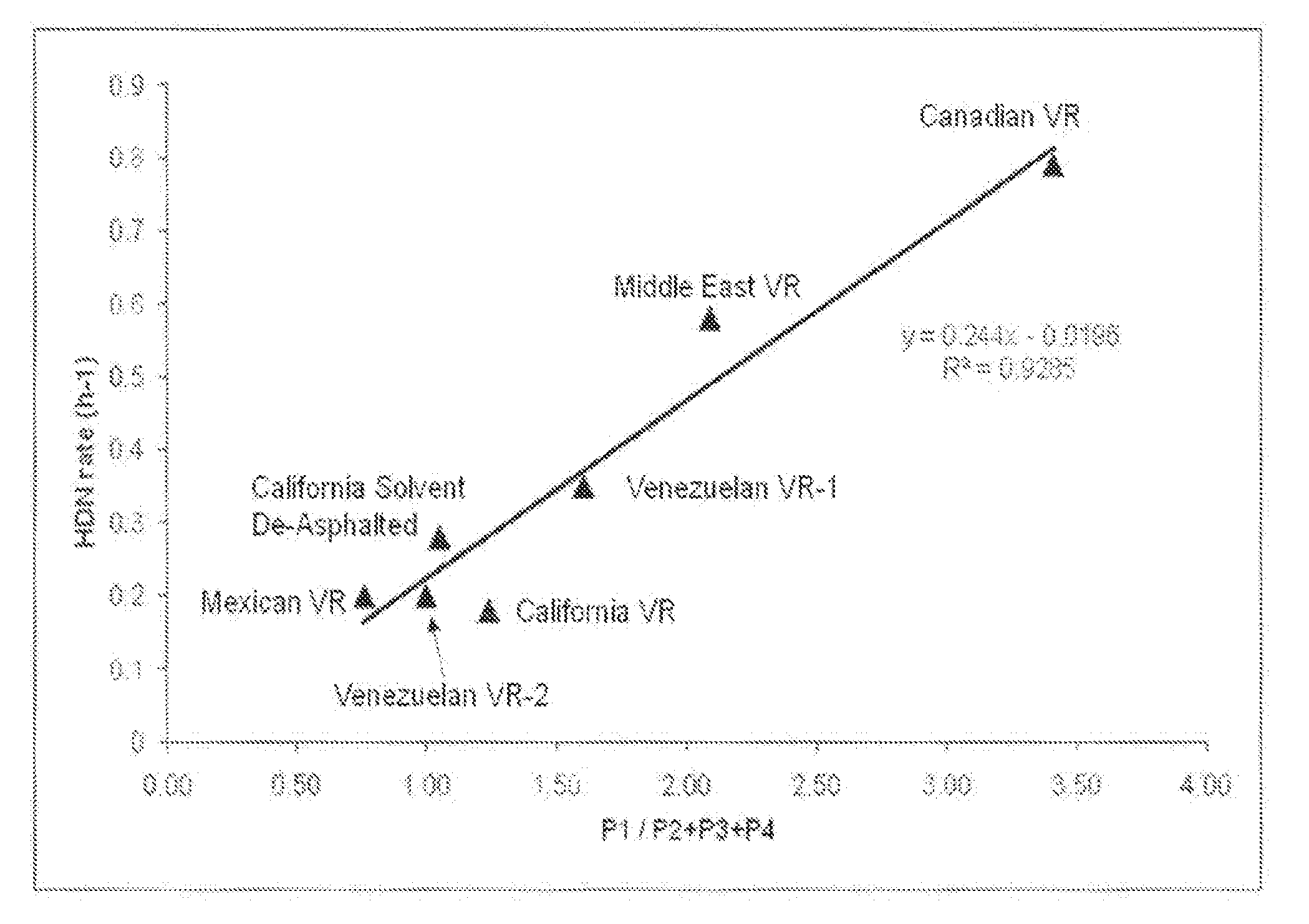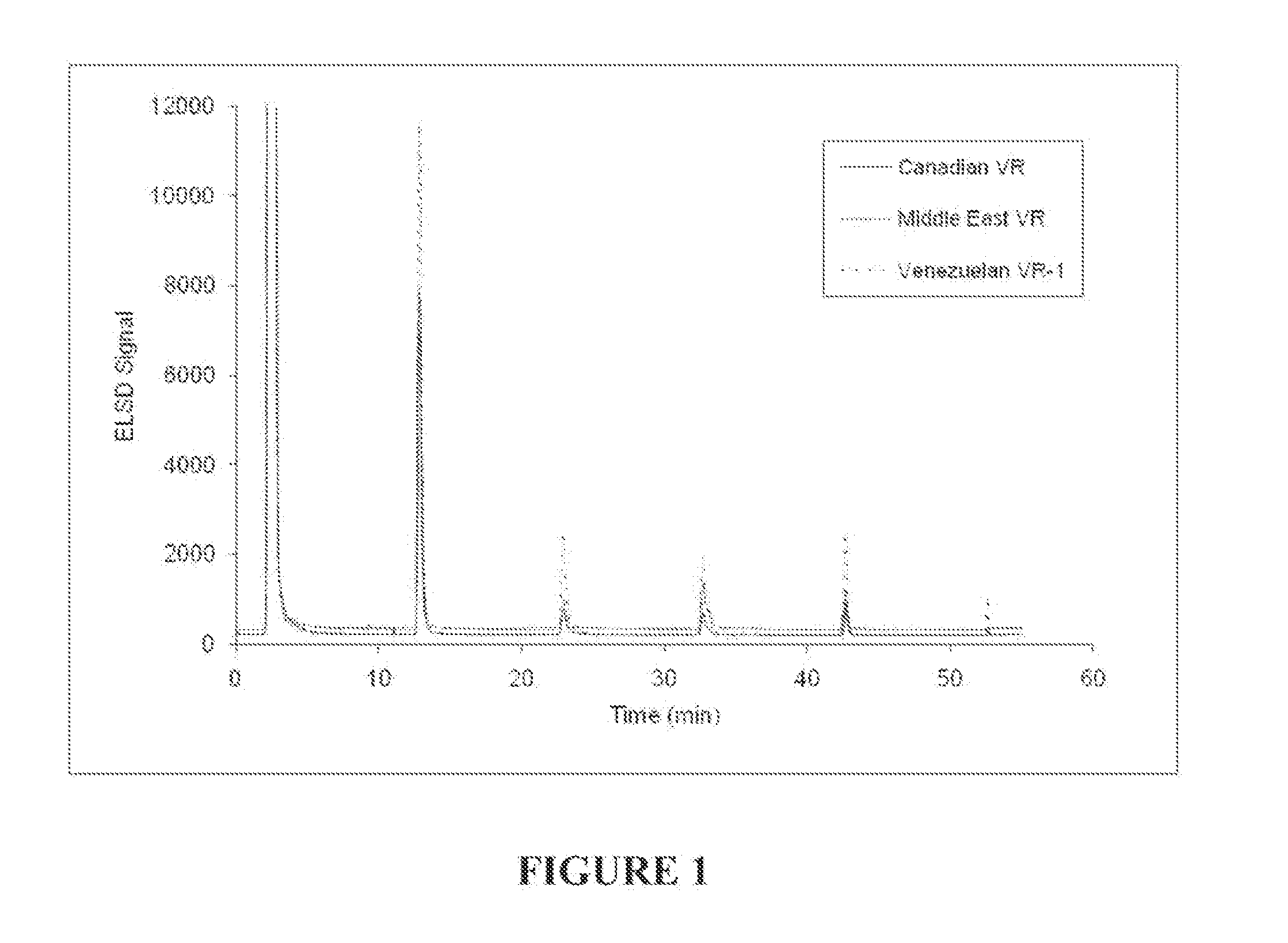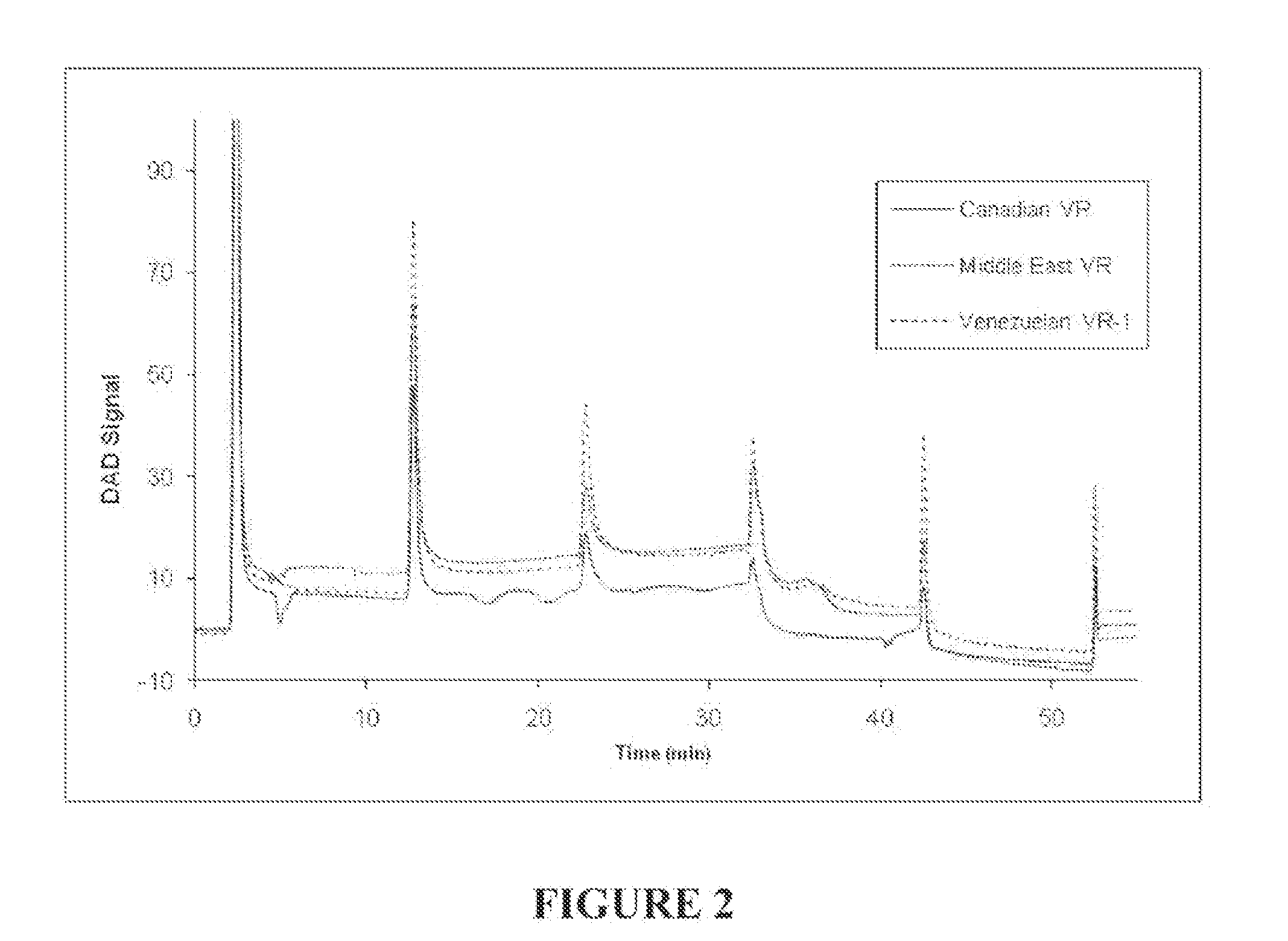Method for predicting reactivity of a hydrocarbon-containing feedstock for hydroprocessing
a hydroprocessing and hydrocarbon-containing technology, applied in chemical methods analysis, instruments, data processing applications, etc., can solve the problems of increasing the cost of feedstock and product streams, increasing the number of undesirable components, so as to maximize the conversion of residues and/or product yields, the effect of simple and cost-efficient and repeatabl
- Summary
- Abstract
- Description
- Claims
- Application Information
AI Technical Summary
Benefits of technology
Problems solved by technology
Method used
Image
Examples
example 1
[0113]Solutions of seven reference heavy crude oil feedstocks shown in Table 1 were prepared by dissolving 0.1000 g of the feedstocks in 10 mL of methylene chloride. The solutions were injected into a separate stainless steel column packed with poly(tetrafluoroethylene) (PTFE) using a heptane mobile phase (Solubility Parameter of 15.3 MPa0.5) at a flow rate of 4 mL / min. The maltenes (heptane solubles) eluted from the column as the first peak around 2 minutes after the injection. The mobile phase was then switched in successive steps to solvents of increasing solubility parameters: (1) 10 minutes after the addition of the heptane phase, a blend of 15% dichloromethane / 85% n-heptane (Solubility Parameter of 16.05 MPa0.5) was added to the column; (2) 20 minutes after the addition of the blend of 15% dichloromethane / 85% n-heptane, a blend of 30% dichloromethane / 70% n-heptane (Solubility Parameter of 18.8 MPa0.5) was added to the column; (3) 30 minutes after the addition of the blend of 3...
example 2
[0119]Determining feedstock reactivity in terms of hydrodenitrogenation (HDN) rate (h−1).
[0120]In FIG. 3, the percentages of areas of each solubility fraction from FIG. 1 are plotted versus the feedstock reactivity to hydroprocessing measured in terms of HDN rate (h−1) for each of the reference feedstocks. As shown in FIG. 3, the rate of HDN increases with the amount of 15% CH2Cl2 / 85% C7 soluble asphaltenes in the feeds and is inversely proportional to the content of the other three fractions (30% CH2Cl2 / 70% C7, 100% CH2Cl2 and 10% MeOH / 90 CH2Cl2). However, the correlation coefficients for all the plots were quite poor varying in the 0.2 to 0.6 range.
[0121]FIG. 4 shows the feedstocks reactivity to hydroprocessing of the reference feedstocks in terms of HDN rate plotted versus the ratio of areas of “easy-to-react” to “hard-to-process” asphaltenes. As can be seen, for each of the reference feedstocks samples, there is an improved correlation (R2=0.9285) between the HDN rate and the ra...
example 3
[0125]Determining feedstock reactivity in terms of reduction of microcarbon residue (MCR).
[0126]In FIG. 6, the percentages of areas of each solubility fraction from Table 1 were plotted versus the feedstock reactivity to hydroprocessing measured in terms of % of reduction of MCR for all reference feedstocks. As can be seen, the reduction of MCR increases with the amount of 15% CH2Cl2 / 85% C7 soluble asphaltenes in the feeds and is inversely proportional to the content of the other three fractions (30% CH2Cl2 / 70% C7, 100% CH2Cl2 and 10% MeOH / 90 CH2Cl2). However, the correlation coefficients for all the plots are quite poor varying in the 0.01 to 0.8 range.
[0127]FIG. 7 shows the percentage of reduction of MCR plotted versus the ratio of areas of “easy-to-react” to “hard-to-process” asphaltenes. As can be seen, for the reference feedstocks samples, there is an improved correlation (R2=0.9285) between the reactivity to hydroprocessing and the ratio “easy-to-react” to “hard-to-process” as...
PUM
| Property | Measurement | Unit |
|---|---|---|
| solubility parameter | aaaaa | aaaaa |
| solubility parameter | aaaaa | aaaaa |
| solubility parameter | aaaaa | aaaaa |
Abstract
Description
Claims
Application Information
 Login to View More
Login to View More - R&D
- Intellectual Property
- Life Sciences
- Materials
- Tech Scout
- Unparalleled Data Quality
- Higher Quality Content
- 60% Fewer Hallucinations
Browse by: Latest US Patents, China's latest patents, Technical Efficacy Thesaurus, Application Domain, Technology Topic, Popular Technical Reports.
© 2025 PatSnap. All rights reserved.Legal|Privacy policy|Modern Slavery Act Transparency Statement|Sitemap|About US| Contact US: help@patsnap.com



